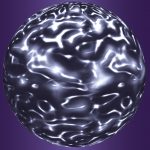Lien vers Pubmed [PMID] – 32511263
Lien DOI – 10.1371/journal.ppat.1008611
PLoS Pathog 2020 06; 16(6): e1008611
Human infection with avian influenza A (H5N1) and (H7N9) viruses causes severe respiratory diseases. PB1-F2 protein is a critical virulence factor that suppresses early type I interferon response, but the mechanism of its action in relation to high pathogenicity is not well understood. Here we show that PB1-F2 protein of H7N9 virus is a particularly potent suppressor of antiviral signaling through formation of protein aggregates on mitochondria and inhibition of TRIM31-MAVS interaction, leading to prevention of K63-polyubiquitination and aggregation of MAVS. Unaggregated MAVS accumulated on fragmented mitochondria is prone to degradation by both proteasomal and lysosomal pathways. These properties are proprietary to PB1-F2 of H7N9 virus but not shared by its counterpart in WSN virus. A recombinant virus deficient of PB1-F2 of H7N9 induces more interferon β in infected cells. Our findings reveal a subtype-specific mechanism for destabilization of MAVS and suppression of interferon response by PB1-F2 of H7N9 virus.
